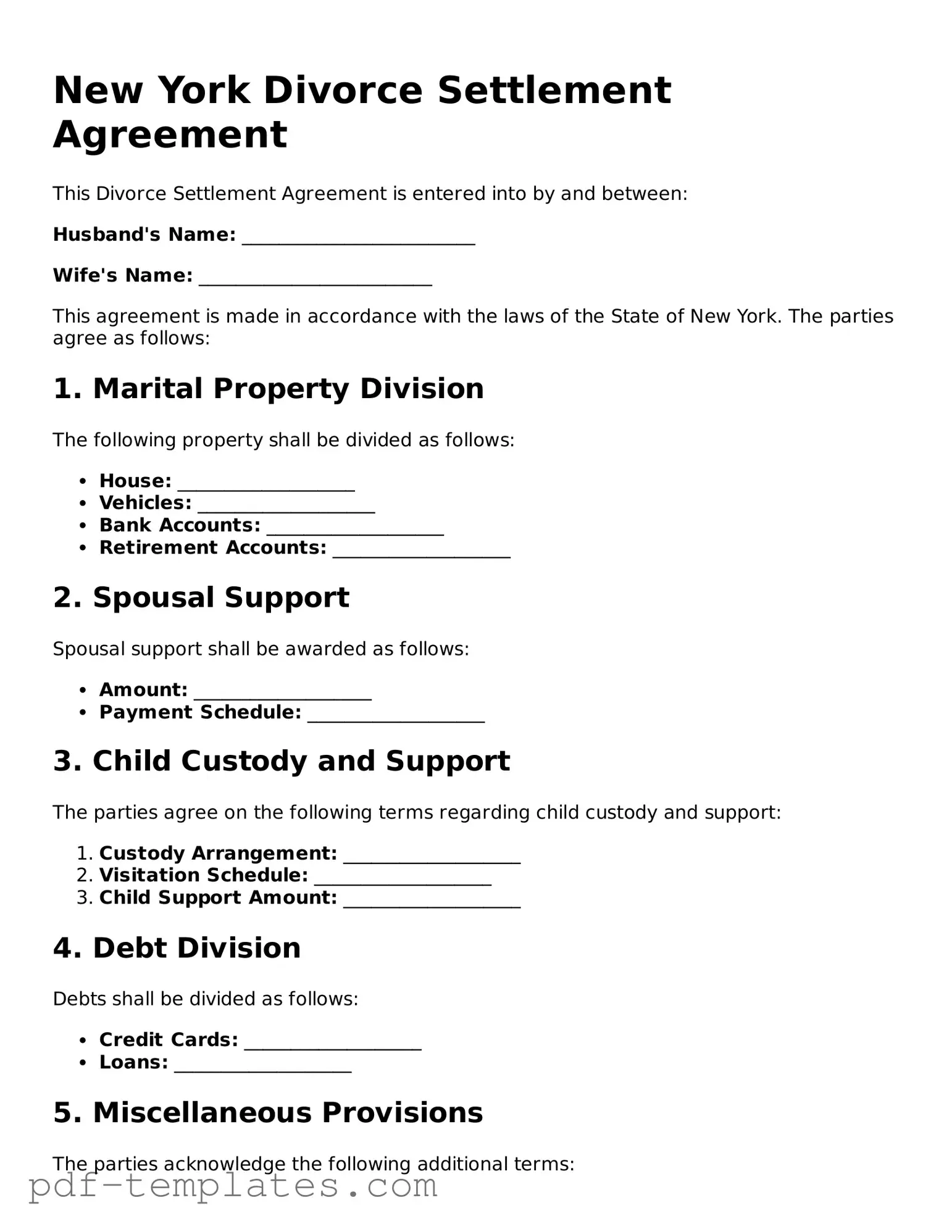The New York Child Custody Agreement is similar to the Divorce Settlement Agreement in that both documents address critical aspects of family law. Each agreement outlines the terms and conditions that govern the relationship between parties, particularly concerning children. While the Divorce Settlement Agreement focuses on the division of assets and responsibilities following a divorce, the Child Custody Agreement specifically details arrangements for the care and upbringing of children. This includes visitation schedules, decision-making authority, and support obligations, ensuring that the best interests of the child are prioritized.
The Marital Settlement Agreement is another document closely related to the Divorce Settlement Agreement. It serves as a comprehensive outline of how the couple will divide their property, debts, and other financial matters after separation or divorce. Like the Divorce Settlement Agreement, it aims to provide clarity and prevent future disputes. Both agreements require mutual consent from the parties involved, and they often address similar issues such as alimony and division of retirement accounts, making them essential for a smooth transition post-divorce.
The Separation Agreement also bears resemblance to the Divorce Settlement Agreement. This document is used when couples choose to live apart without formally divorcing. It outlines the terms of the separation, including financial responsibilities and custody arrangements. While the Divorce Settlement Agreement is finalized upon divorce, the Separation Agreement can serve as a precursor, setting the stage for future divorce negotiations. Both documents aim to resolve issues amicably, promoting cooperation between the parties.
The Parenting Plan is another document that shares similarities with the Divorce Settlement Agreement, particularly regarding child-related matters. This plan outlines how parents will raise their children after separation or divorce. It includes provisions for custody, visitation, and communication between parents. Like the Divorce Settlement Agreement, the Parenting Plan is designed to ensure that both parents remain involved in their children's lives and that their needs are met. Both documents emphasize the importance of cooperation and clear communication for the well-being of the children.
In addition to the aforementioned legal documents, it is essential to consider the importance of properly documenting the sale of a trailer, which can be facilitated through a Trailer Bill of Sale form. This form serves as a crucial tool to ensure a smooth ownership transfer by providing clarity and preventing future disputes. For those looking to draft or obtain this important document, you can find a useful resource at documentonline.org/blank-trailer-bill-of-sale.
Finally, the Property Settlement Agreement is akin to the Divorce Settlement Agreement, focusing primarily on the division of marital property. This document details how assets and liabilities will be divided between the parties. Similar to the Divorce Settlement Agreement, it requires both parties to agree on the terms and can help prevent future disputes regarding property ownership. The clarity provided by a Property Settlement Agreement is crucial for ensuring that both parties understand their rights and responsibilities concerning shared assets.
